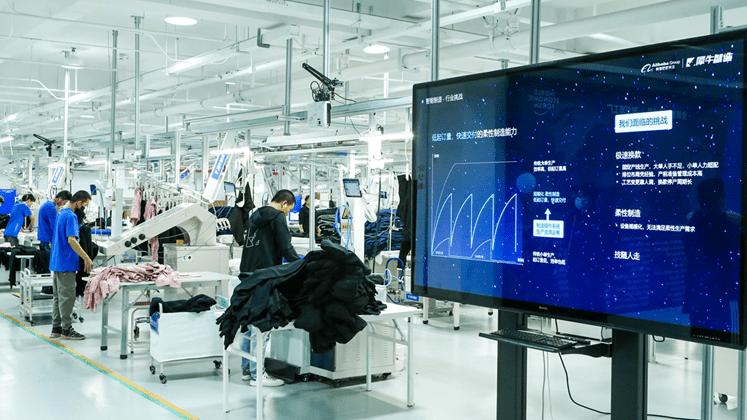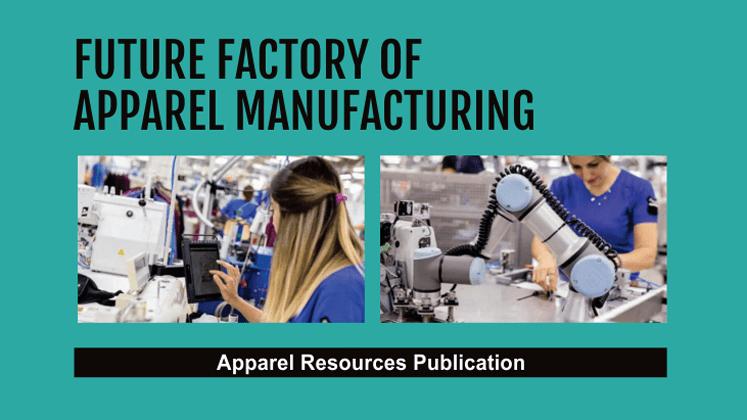
For an industry as fragmented as fashion, no prediction could work for long in the past in terms of changing business landscape across supply chain, except for one and that is – the use of digital technologies. However, it took a pandemic like COVID-19 for the industry to understand the significance of tech advancement, particularly in the apparel factories which were in dire need of transformation at a rapid pace.
The reality is that no buyer will pay more for the products they are sourcing from factories tomorrow than what they paid yesterday. Additionally, the buyers always look for better efficiencies and productivity at factory level, failing which the factory is certainly going to lose business in this competitive age. Product cycles have also shrunk greatly from months to days – all thanks to increasing consumption from more digitally-aware consumers on various shopping platforms such as online, offline and omnichannel stores. A massive turnaround of traditional factories can happen, provided they start making efforts proactively to get rid of prolonged challenges.
How does a ‘Future Smart Apparel Factory’ look like… It’s data all around!
Unlike traditional consumption trends where the orders of less SKUs were placed in the factories in huge quantities, the end-consumer today wants to have more design options and personalised clothing which means an order for a particular SKU is not as huge as it used to be. If ‘Future Smart Apparel Factory’ is talked about, this trend has to be taken under consideration. So, what impact this trend is going to make on the supply chain? More designs and less quantities of an SKU means more difficult supply chain and more arduous processes on shopfloor.
Explaining the same, Carlos Conde Bande, GM (Innovation and Experimentation, Li & Fung , commented, “In such a scenario, there would be more need for capturing information in right time as well as we would need to analyse that information for further decision making. In these endeavours, ‘smart’ solutions and technology will be of great help and one needs to have holistic vision from beginning of the supply chain to the end of it.”
What is meant by ‘smart solution’ is not those technologies which need heavy investments and may not be factory-friendly (depending on the scale of the factory), but those innovations which a factory really needs to pace up in terms of with standards and make it cost-competitive in true sense. In an unbelievable span of different ages of industrialisation and technological adaptation, some factory owners don’t realise that digital twin or digital part of their factory needs the same attention and the same care as the physical twin. Else, they would end up having bunch of apps and tools that are purely disconnected and disintegrated in nature, however when it comes to physical work, the factories rarely disconnect cutting with sewing, sewing with finishing, and packaging with warehouse!
To make things simple, let’s take an example. One typical factory should not go directly for real-time monitoring all at once, rather it should implement an effective ERP to automate the manual documentation. Similarly, the factories need to identify what solution would work best to improvise their processes – step-by-step.
Endorsing the same, Joachim Hensch, Chief Transitioning Officer, Ex Managing Director Hugo Boss Textile Industries , Izmir (Turkey) shared, “One doesn’t need to buy an iPhone 12 because his iPhone 6 may be working well and the same thing should be applied to the factories. They need not invest blindly into the technology, rather they need to go for step-by-step adaptation of right technologies in the right areas within their premises… and, at the same time, the factory owners need to understand that they should not overwhelm the people in the company as they are completely lost if automation comes in.”
The Izmir-based factory of Hugo Boss – which produces suits, jackets, shirts and coats with the help of over 3,500 workforce – is an epitome of a ‘smart’ factory. The factory uses technologies such as Smart Data Management (SDM); Group Board & Line Board; Augmented Reality (AR)/Virtual Reality (VR); Active Digital Assistance (ADA); and Speech Recognition on its shopfloor. What’s more interesting is that the factory connects the 4 pillars – people, machines, products and processes – altogether and this digital networking between these 4 pillars makes it possible to create a ‘digital twin’ of the factory.
According to Joachim , one of the things that really worked initially was collecting PLC data to get help in predictive maintenance in order to reduce downtime of the machinery, but what they didn’t estimate was so much availability of information of what people do with technology! “Once we realised this, we could better manage people with technological systems,” commented Joachim.
(Apparel Resources has always endorsed the use of smart solutions in factories to make them competitive and more profitable, which is evident in the in-depth articles that we have written for over 2 decades. )

As ‘smart factory’ or ‘future factory’ is a concept more relevant today than ever, our recently published book centres around the topic and the same is titled – The Future Factory of Apparel Manufacturing – and the one who wishes to give it a read, may click here – https://books.google.co.in/books/about?id=thYHEAAAQBAJ&redir_esc=y&hl=en )
Another thing that a future-ready smart factory should look for is an interaction between machine and humans as well as the precise tracking of this interaction. If there are 8 workers doing the same job or are assigned to do same operations, the factory can use the data to determine who the best out of all is. Once it’s found out, the management can look deeper into data and find out what different that operator is doing than the other seven operators. By analysing this, the factory can turn it around as training program and present like a case study.
“This will help improve other operators’ performance and they will be able to increase efficiency and productivity. This, in turn, reflects in better salaries and this is my biggest point here. If the improvement of the factory with the use of technologies and data analysis gives profit to the owners only, the employees will never embrace technology,” opined Joachim.
Brian Waterfield, Head of Immersive Production, Falmouth University , with all his experience in the field of production and intelligent innovations, commented that it’s never one solution that fits all but it’s a combination of different technologies that are usable in factories. According to Brian, the use of AI and Machine Learning is becoming prominent on shopfloor to understand how data analytics works in presence of people element.
“I think it’s very much required from the people’s side to use their imagination in order to create better products in post-pandemic time so that designing of the product gets strengthened and automation takes care of majority of rest of the processes. I reckon ‘Digital Author’ can make similar impact on the processes. What ‘Digital Author’ represents is the digital intelligence becoming the master and the physical world becomes instructed by the master data simulation. So, in simple terms, the AI simulation drives the changes in the real world, updating and authoring the next steps in any business model,” asserted Brian.
Digital Twin of sewing operators’ skill mapping should be an integral part of future smart apparel factory …
The use of digital twin technology for sewing operators is sort of new concept for the industry but this can help factories understand operators’ skill strengths and weaknesses in terms of their skill attributes which will enable rational job allocation to improve productivity and quality. India’s NIFT (National Institute of Fashion Technology) is probably the first institute across the world which has a patented technology for this purpose.
According to Dr. Prabir Jana, Professor, NIFT , this digitalisation is necessary for sewing operators and unfortunately it’s not found in the industry. “The factories generally prepare just an operation matrix, which tells us who can perform what operation. However, two different operations may require similar skill. We have revolutionised this process with a system which can actually measure any operator’s generic skills objectively, create digital twin of the operator, and facilitate fair wage, transparency and job portability. This has been a dream of many high- street retailers as they talk about fare wage,” commented Prabir.
“When it comes to middle management and top management, their resume and communication skills tell companies about them if they switch jobs. However, the sewing operators don’t have anything to prove their expertise on sewing machines. But now, with NIFT’s system, if operators are shifting job from one company to another company, they don’t need to prove themselves as the digital certificate tells everything about their skills. This is really helpful in operator portability and making factories smart and future-ready,” further informed Prabir.
What about the use of wearables (for operators) on shopfloor!
This may be a debatable topic but, in labour-driven factories, the human factor plays vital role and the same has to be talked about. Because of internal and external factors, an operator may not perform 100% on the sewing line and this will impact the overall productivity of shopfloor. However, the factories are only recording external data (production, efficiency, machine breakdown, etc.). Creating a digital twin of workers will not be complete without capturing the physiological parameters. Simulating a production scenario combining the external date with real time physiological body parameters of workers will be the real game changer in smart factories. “We have done a pilot on the use of wearables for operators which has given encouraging results. However, this may be controversial as it captures the human data and one may not find it ethical because the boundary lines in such wearables have not been created yet. But again, we are already using smartphones which are keeping a track on our activities,” suggested Prabir.
According to Brian Waterfield, using wearables for humans in factories should not be an issue until unless it is used by communicating and engaging the operators.
(The insights and information of all these eminent industry professionals were shared in a recently happened webinar organised by PI Apparel.)

Post a Comment